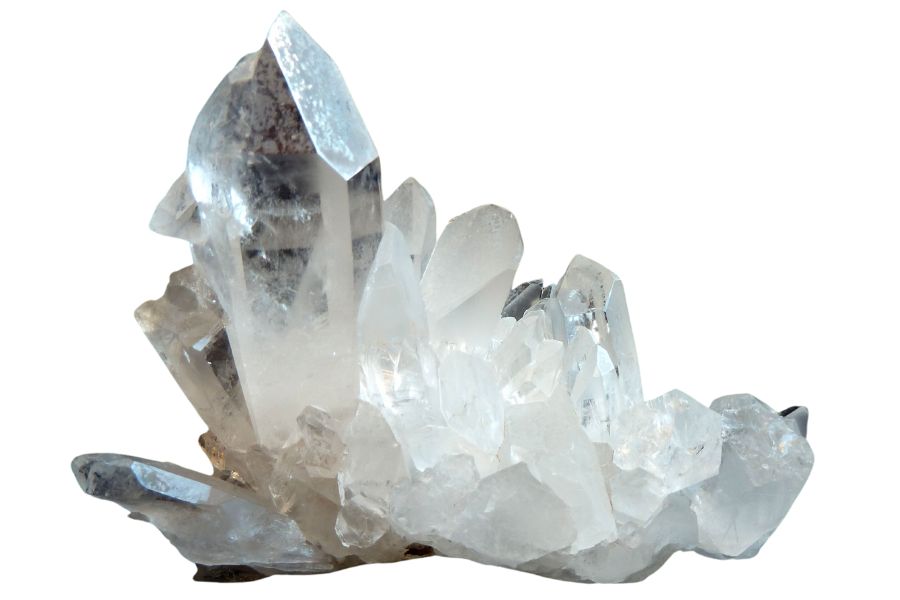Finding crystals can be a rewarding adventure, offering a unique way to explore the natural beauty and geology of the region. Whether you’re a seasoned rockhound or just getting started, knowing where to look is key to uncovering these hidden treasures.
In this state, a variety of locations provide opportunities to discover different types of crystals. From rocky outcrops in the mountains to stream beds that carry sparkling surprises, each area offers its own unique finds for those willing to search.
We can help you get started with some places you can explore for crystals below!
We’re going to cover the following here:
- The crystals you can find across the country
- The rare crystals found in South Dakota
- The common crystals found here
- How to spot and identify crystals
- Some of the laws and regulations you should know
- Where you can find crystals here
- The best places to start your search for crystals
Crystals you can find in the US
The United States offers a wide range of crystals that reflect its diverse geology. From vibrant gems to more subtle mineral formations, there’s something to discover in nearly every region.
Calcite
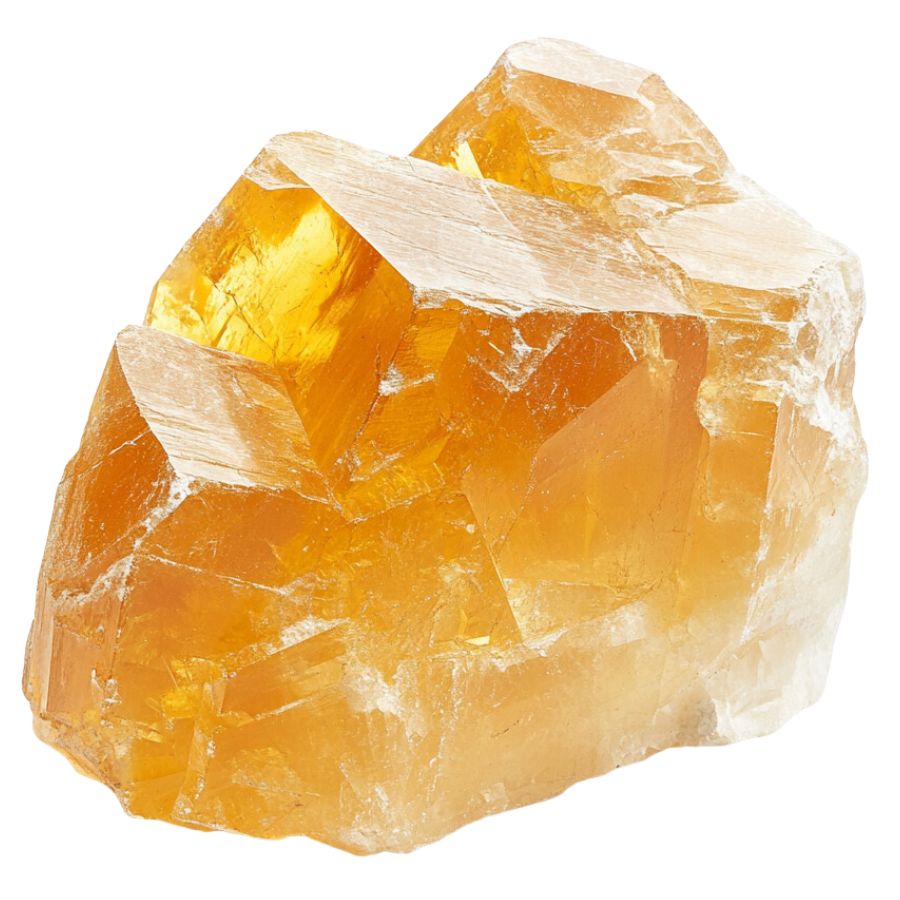
With a variety of forms and a unique property of double refraction, calcite allows objects viewed through the crystal to appear doubled. This mineral can appear in a spectrum of colors, with pure forms typically being transparent or white.
In addition, calcite reacts vigorously with acids, which aids in distinguishing it from other minerals. It also frequently contributes to the structure of sedimentary rocks such as limestone.
Gypsum
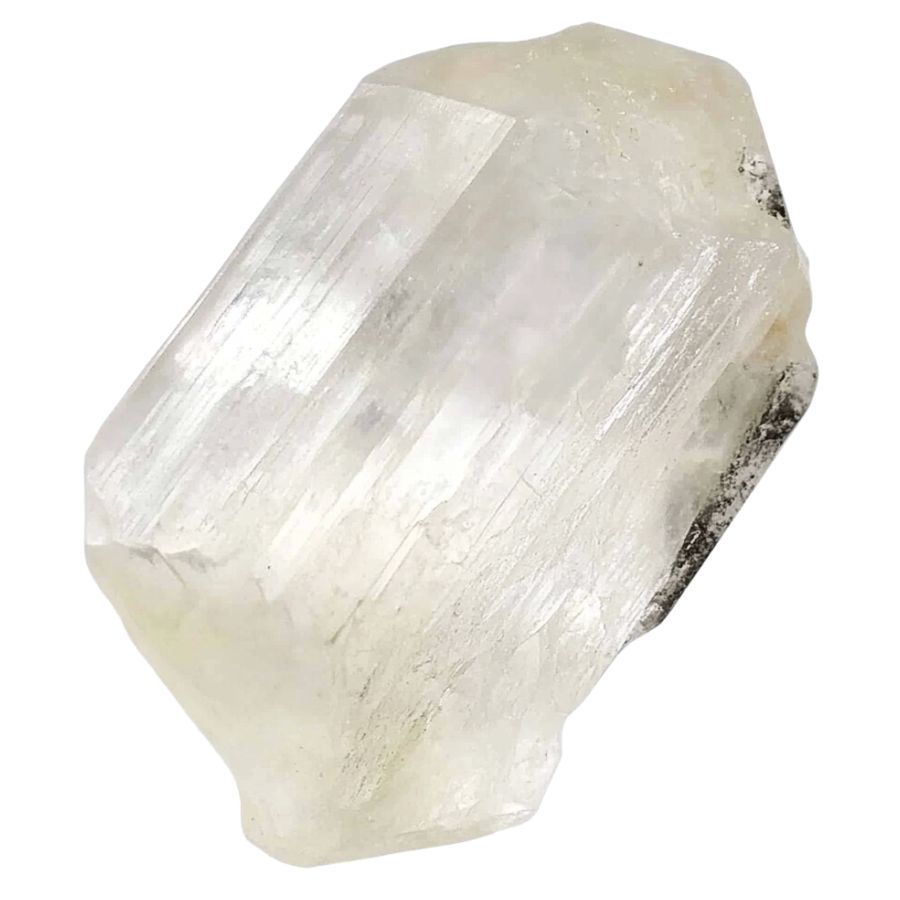
Gypsum’s notable softness allows it to be easily scratched with just a fingernail, often presenting as white or very light-colored in its pure form.
It manifests in both crystalline forms, like selenite, and massive forms such as alabaster, making it versatile in use and appearance.
Gypsum is also essential in the construction industry and is a key component in the manufacture of plaster and drywall.
Fluorite
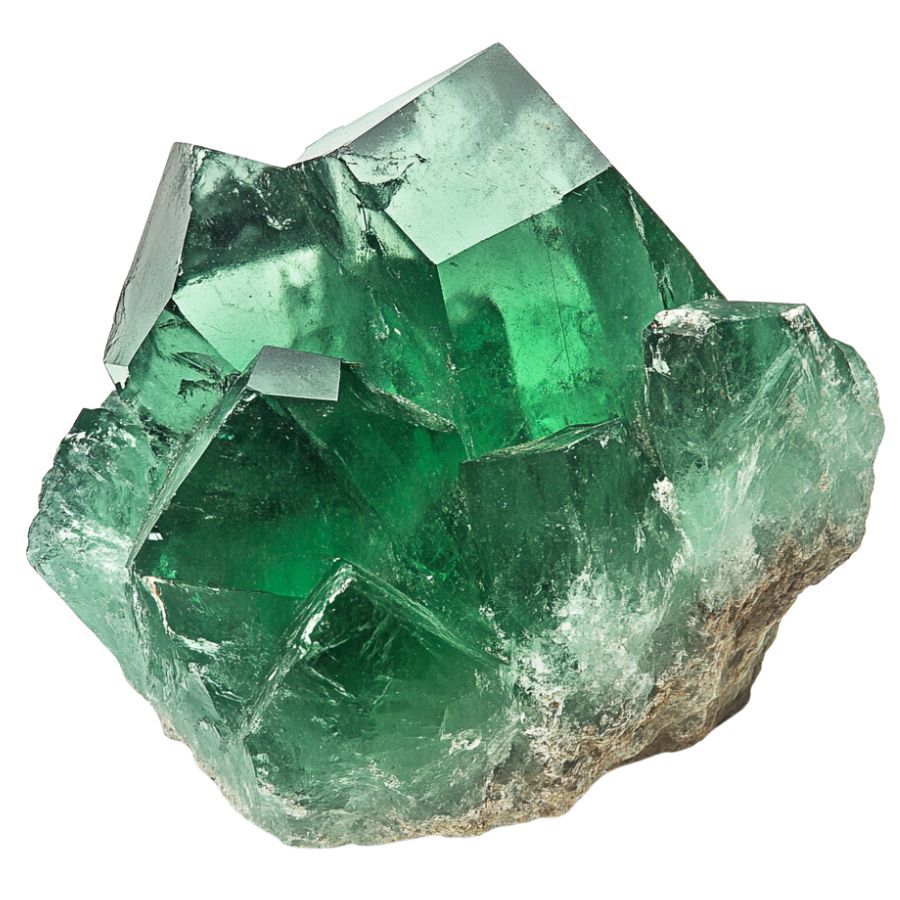
Fluorite comes in a wide range of vibrant colors, including purples, greens, blues, and yellows, and is known for forming in well-defined cubic crystals.
Beyond this, fluorite exhibits fluorescence under ultraviolet light! It can also be used in various industrial applications, including as a flux in steelmaking.
Galena
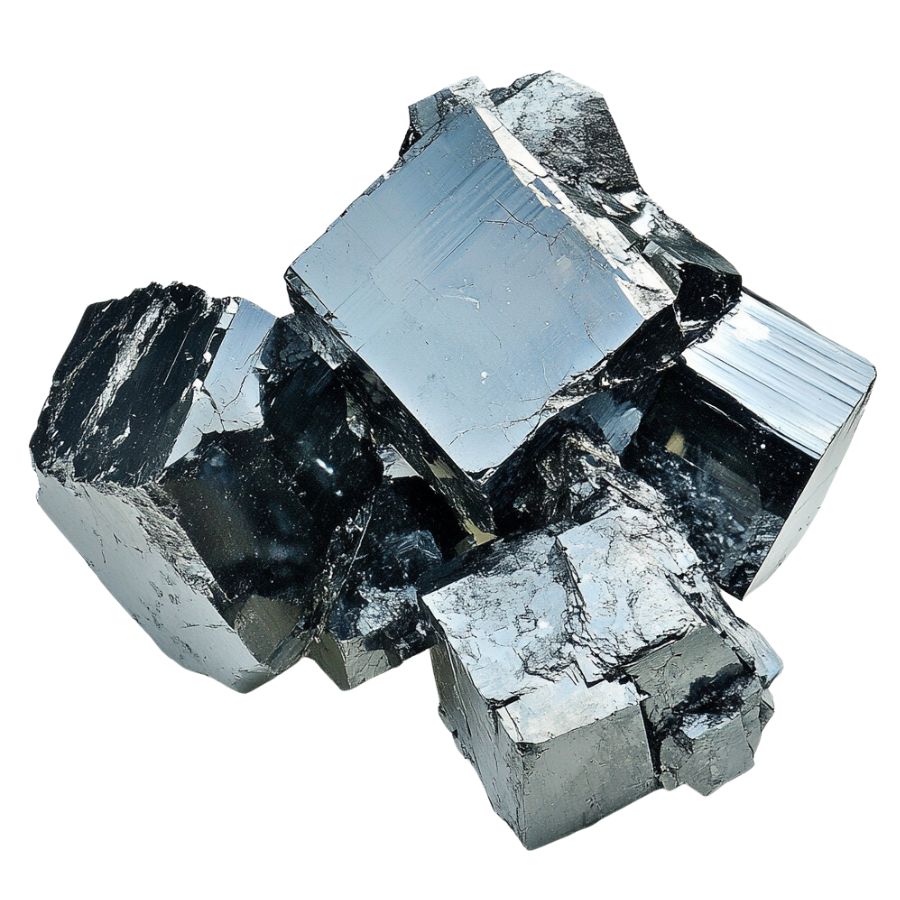
Galena distinguishes itself with a metallic luster and high density, typically found in a cube-like form. It serves as the primary ore of lead, making it important in the metal industry, while its shiny, silver color attracts collectors.
Not only does its appearance make it a subject of interest, but its weight and texture provide tangible lessons in mineral density and metallic properties. Galena also often contains traces of silver, adding to its commercial and educational value.
Corundum
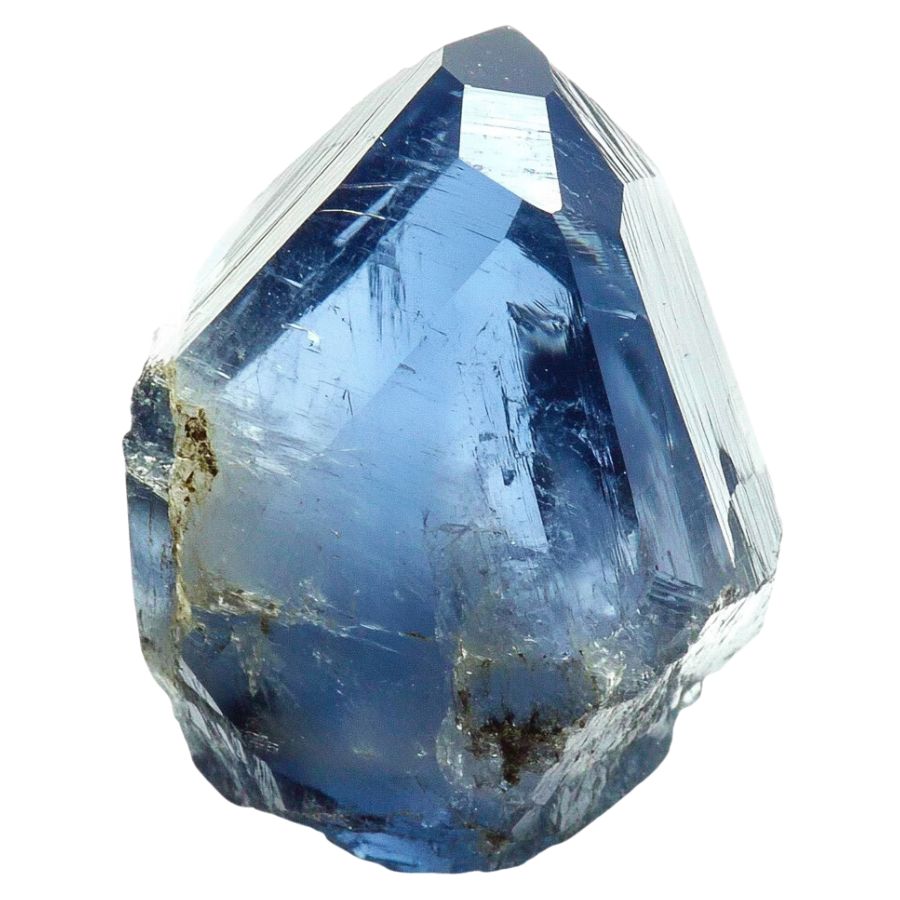
Corundum is a mineral that comes in a variety of colors, though it is typically transparent or gray. Its most famous forms are sapphires and rubies, which are prized for their vibrant blue and red hues.
The mineral is known for its remarkable hardness, ranking just below diamond on the Mohs scale. This durability makes corundum ideal for industrial abrasives and cutting tools, as well as a popular choice for fine jewelry.
Quartz
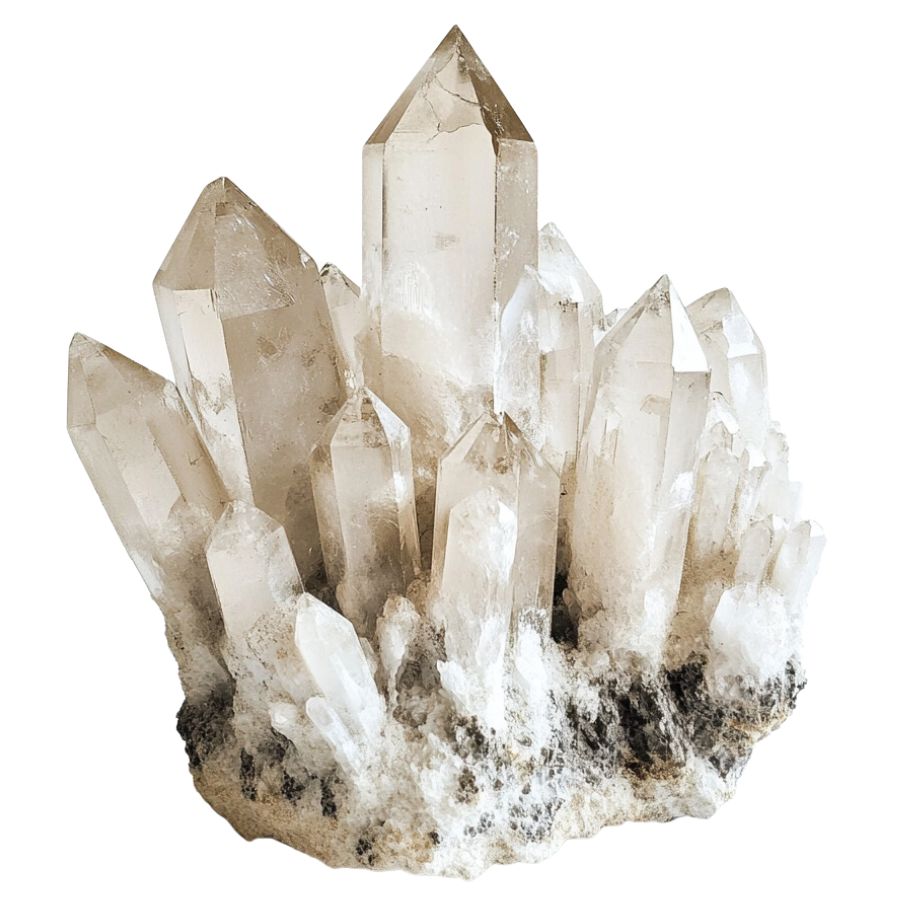
Quartz is among the most common minerals in the Earth’s crust and is prized for its durability and variety. It forms in a wide range of colors and types, from clear rock crystal to purple amethyst.
The mineral is notable for its hardness and durability, which contribute to its use in a variety of applications. Quartz is also popular in the manufacturing of electronics and watches due to its piezoelectric properties, which allow it to convert mechanical pressure into electrical energy.
Pyrite
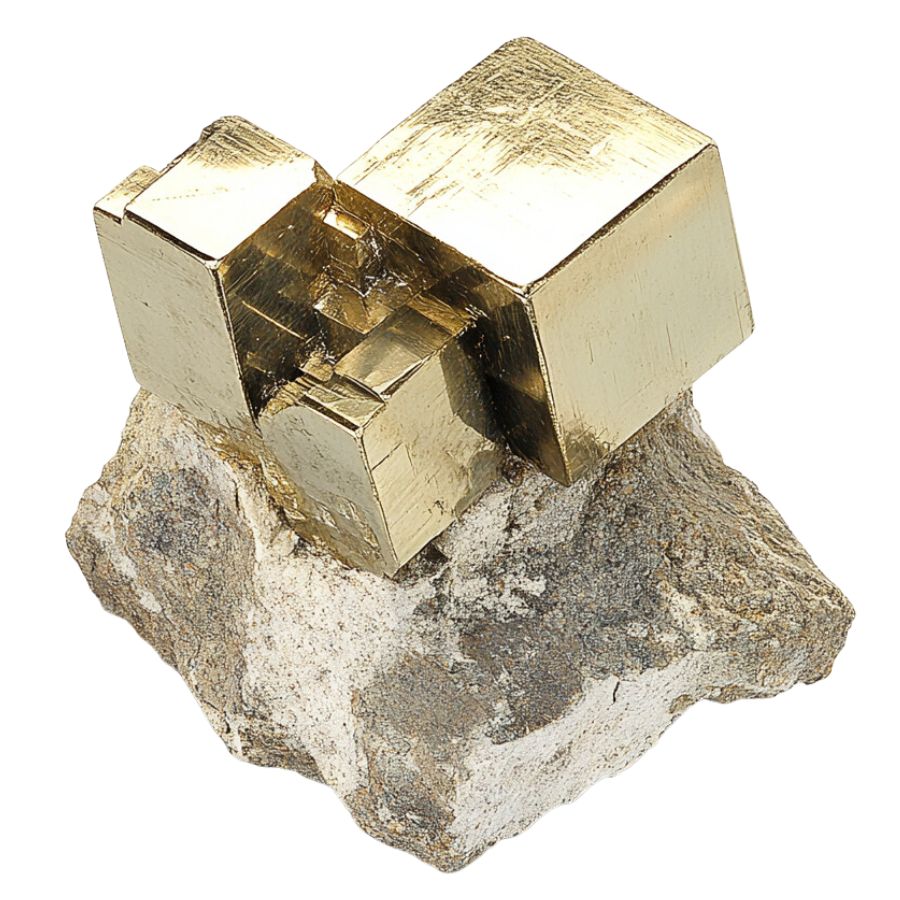
Often mistaken for gold due to its metallic luster and pale brass-yellow hue, pyrite is known colloquially as “fool’s gold.” Its characteristic cube-shaped crystal formations look man-made but are actually completely naturally formed!
Pyrite also has historical importance in producing sulfur dioxide for sulfuric acid production.
Rhodochrosite
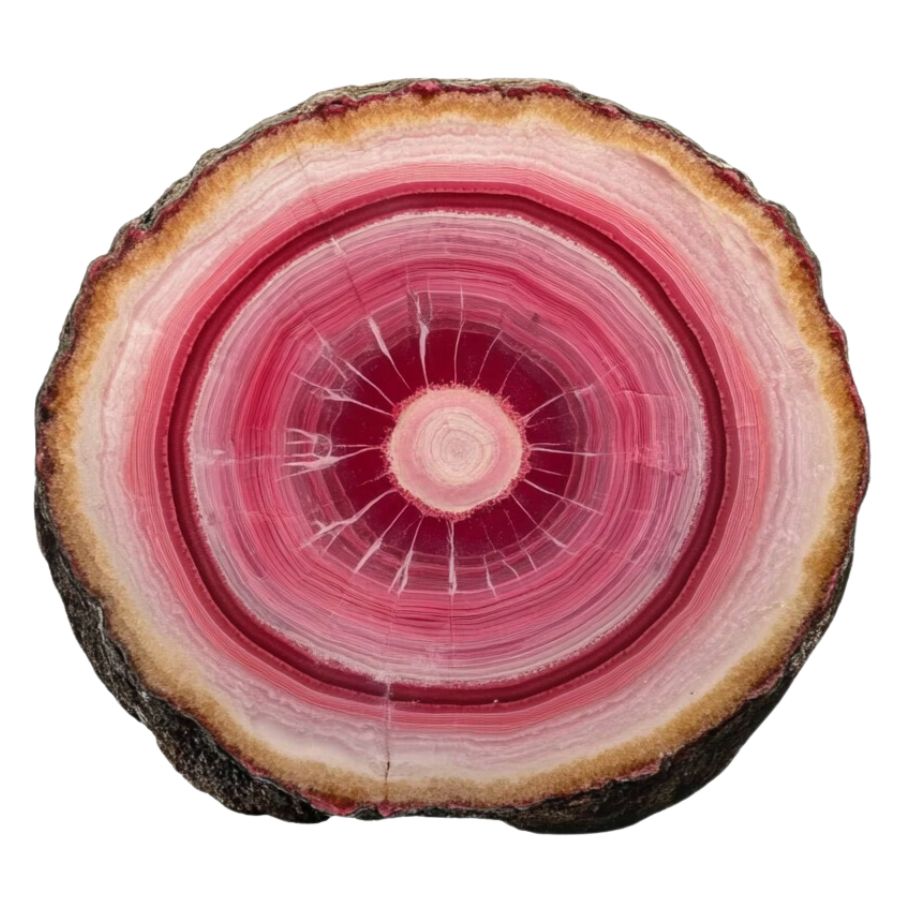
Rhodochrosite stands out with its rich pink and red hues, making it highly desirable as both a mineral specimen and a gemstone.
It typically forms in layered or stalactitic structures, with bands of colors that showcase how it grew over millions of years.
Beyond its beauty, rhodochrosite is significant as the main source of manganese, an essential element used in metal alloys.
Rhodonite
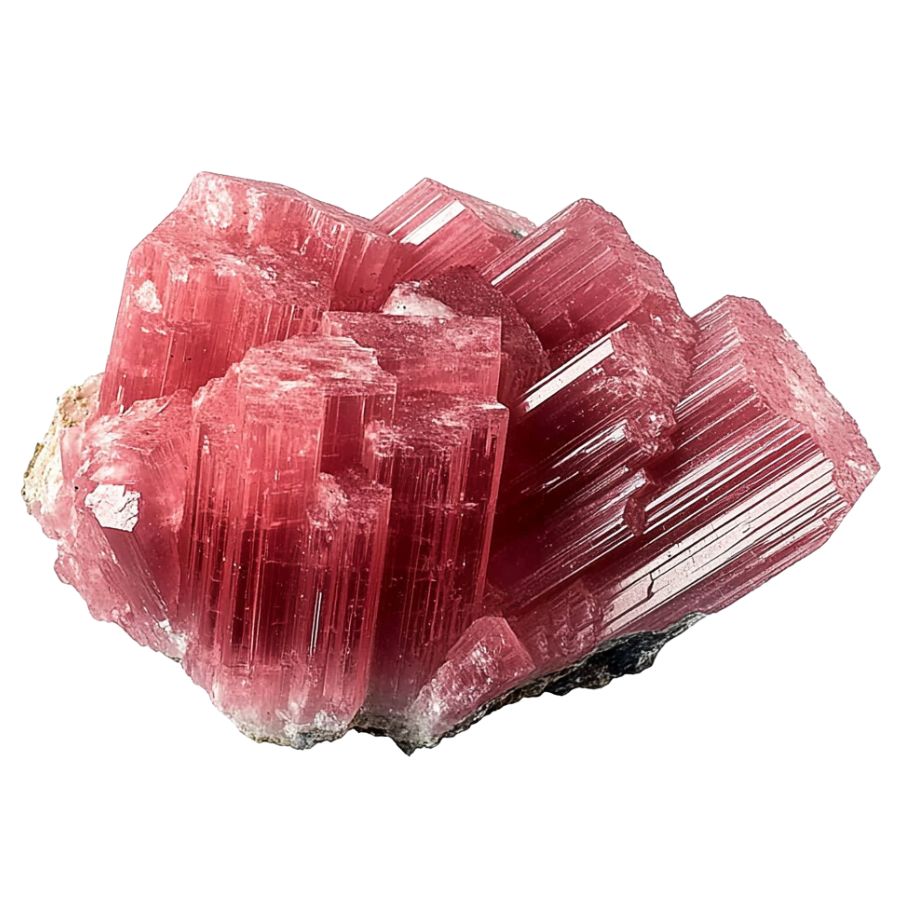
Appreciated for its deep pinks and reds, often complemented by black manganese oxide veins, rhodonite presents a dramatic appearance. It is typically found in metamorphic rocks and is used both as an ornamental stone and in jewelry.
In geology, rhodonite is significant for its role in metamorphic processes and its association with other manganese-rich minerals. It can be found in metamorphosed sedimentary rocks and is sometimes used as an indicator of the presence of manganese deposits.
Vivianite
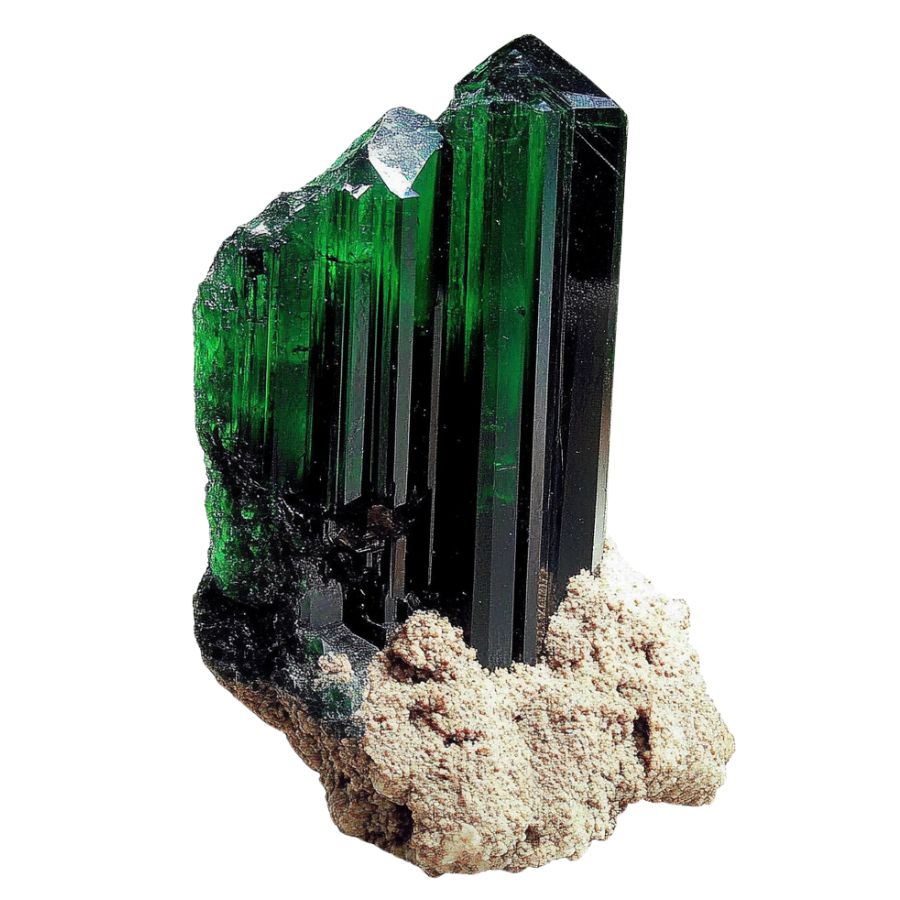
Vivianite, an iron phosphate mineral, emerges in low-oxygen environments like peat bogs or iron-rich deposits. Its striking blue to green color, which can change to a lighter shade over time due to oxidation, makes it a distinctive mineral.
Found in various geological settings, vivianite provides clues about the local conditions and the presence of phosphate deposits.
The Types of South Dakota Crystals You Can Find
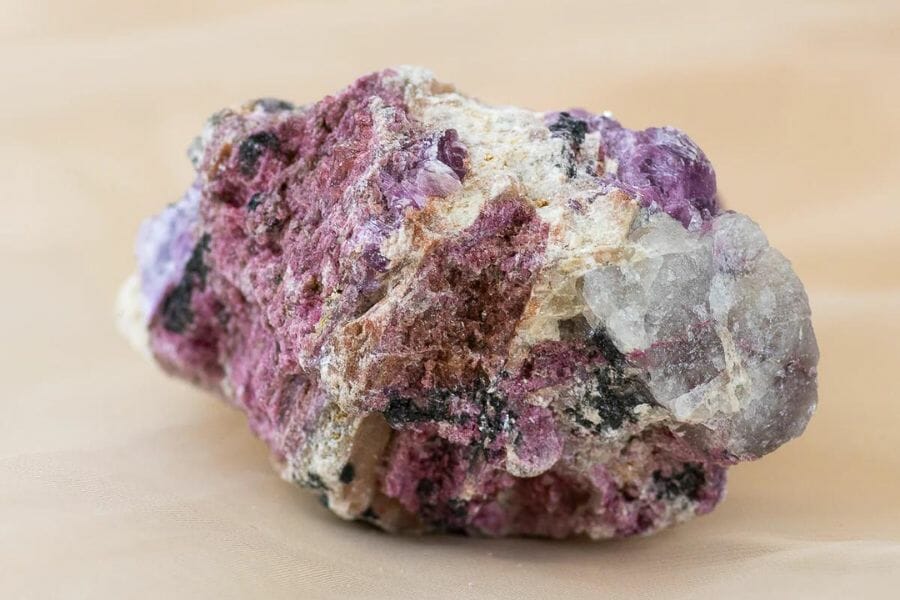
It should be noted that finding crystals can be a little risky. There are times when you’ll come into a treasure trove of crystals, and then there are occasions when you might not. Yet all of it is enjoyable. Half the reason crystal hunting is such a well-liked hobby is the thrill of the chase!
Rare crystals found in South Dakota
- Apatite
- Carnelian
- Fluorite
- Galena
- Jade
- Kunzite
- Pyrite
- Rose Quartz
- Wulfenite
More common crystals found here
- Agate
- Amethyst
- Aquamarine
- Beryl
- Calcite
- Chalcedony
- Garnet
- Jasper
- Lepidolite
- Opal
- Quartz
- Selenite
- Tourmaline
What rough crystals look like
When you’re out looking for crystals on your own it’s important to know what you’re looking for. This is what you need to look out for:
Look for exteriors like this
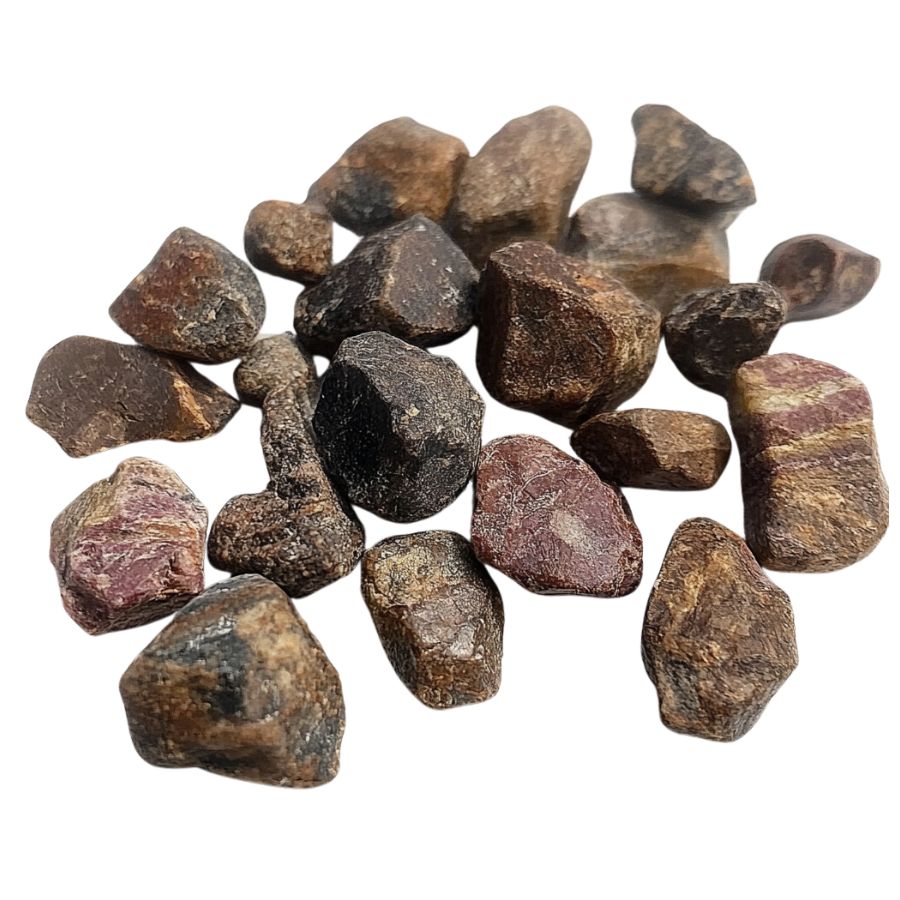
When you’re out searching for crystals in the wild, it’s essential to keep in mind that what you find won’t look like the polished stones you see in stores. One important tip is to consider what certain crystals look like in their raw, natural form.
Without the shine and smooth finish, crystals might appear rough, with jagged edges or earthy tones masking their true beauty. Understanding this can help you spot potential finds that might otherwise be overlooked.
Examine the crystal structure and shape
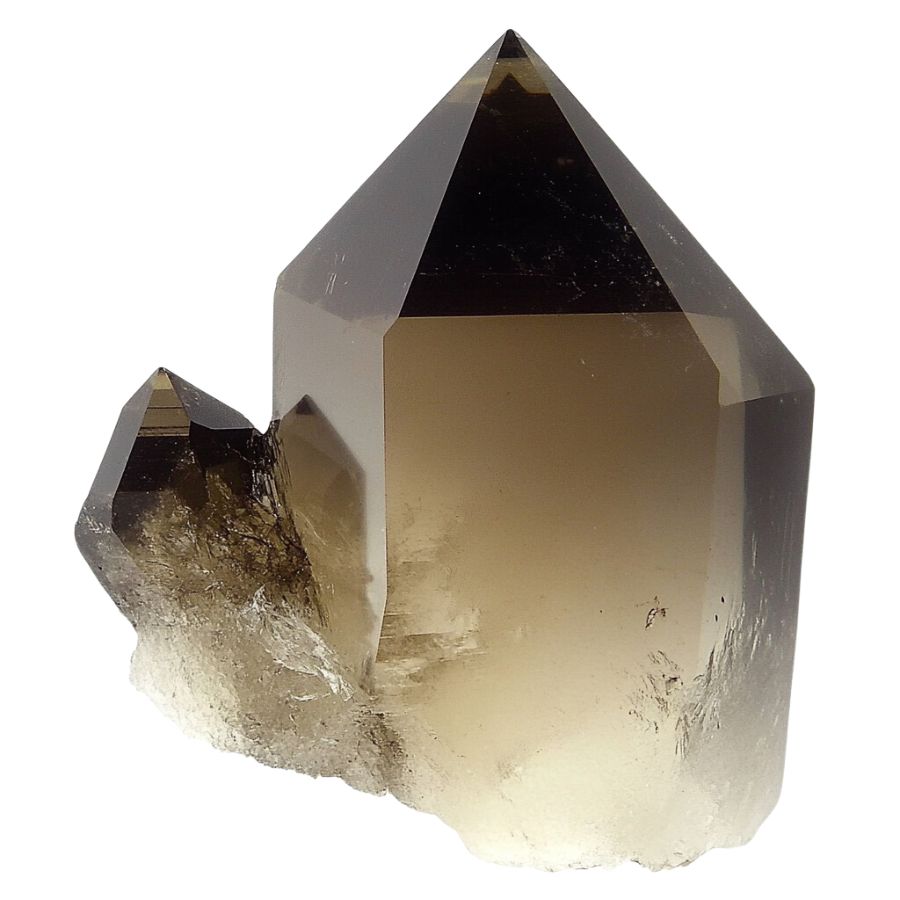
Crystals often form in specific geometric patterns that can be key to identifying them. For example, quartz is known for its hexagonal prisms, while halite typically forms cubic shapes.
By recognizing these distinct patterns, you can differentiate between various types of crystals and better understand what you’ve found.
Observe color
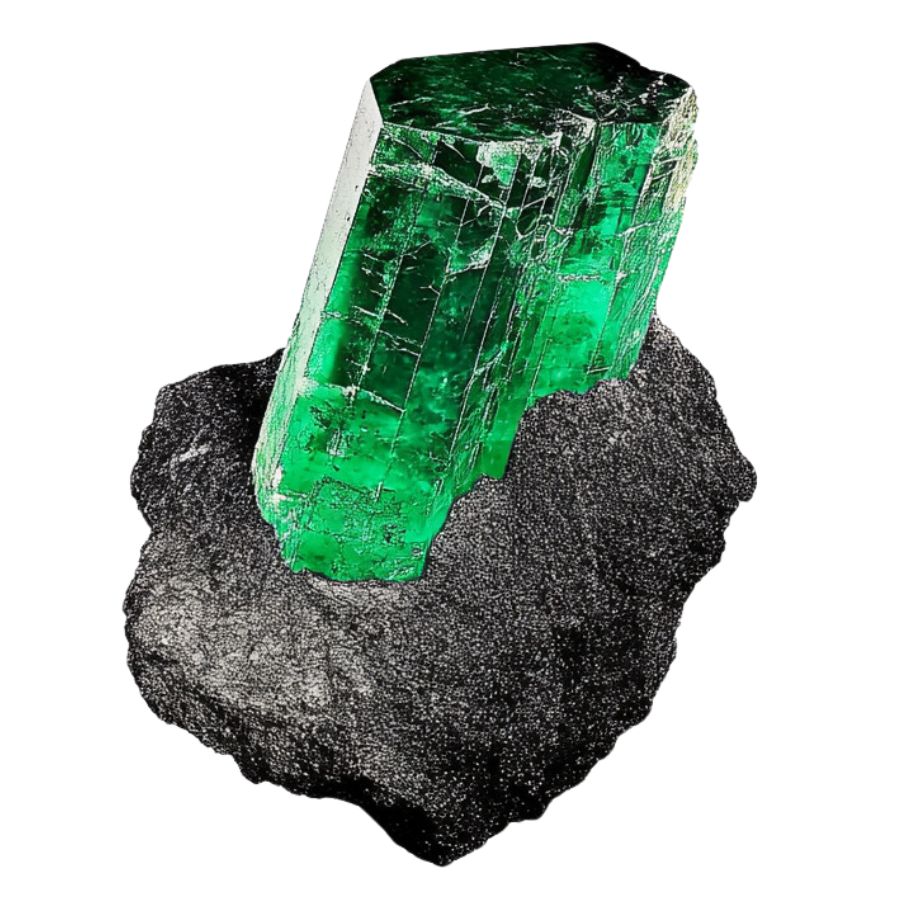
Some crystals are known for their distinct hues, like the deep purple of amethyst or the vibrant green of emerald. However, not all crystals will have strong colors; some may be clear or only slightly tinted.
Check the luster
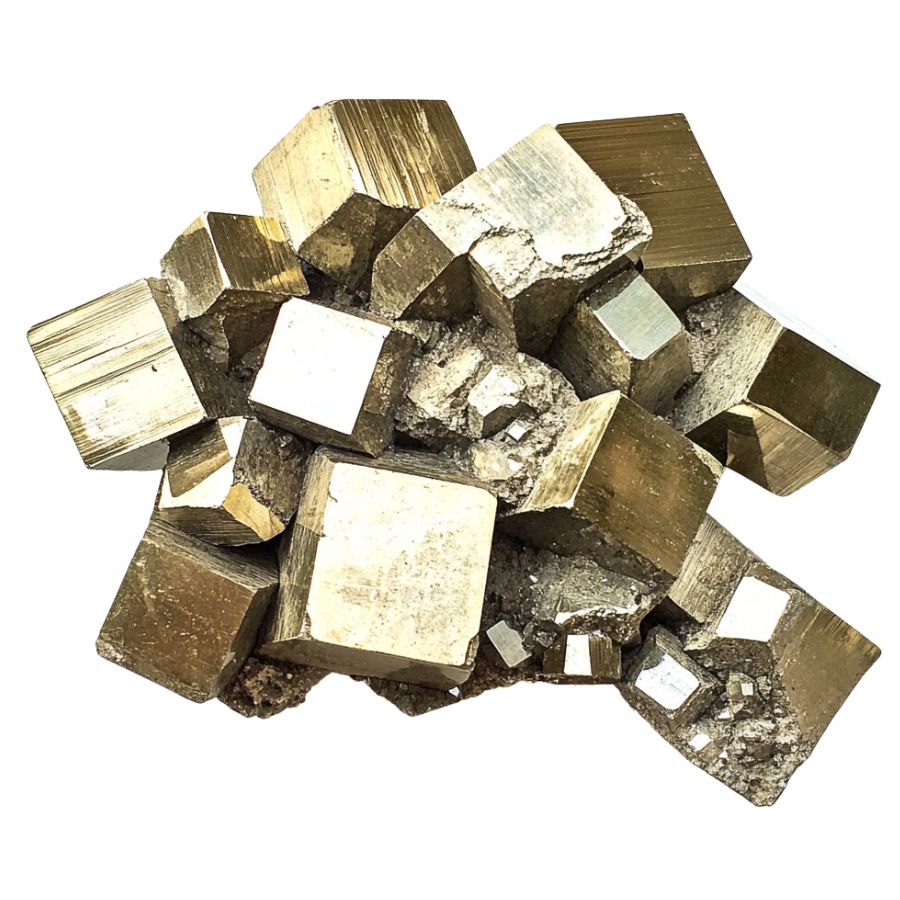
Luster refers to how a crystal’s surface interacts with light. Some crystals might have a shiny, glassy luster, while others may appear metallic or dull. This characteristic can help you determine the type of crystal you’ve found.
However, it’s important to remember that luster isn’t always obvious right away. In some cases, a crystal’s true luster will only become apparent after it’s been cleaned or polished, so keep this in mind as you examine your finds.
Evaluate the transparency
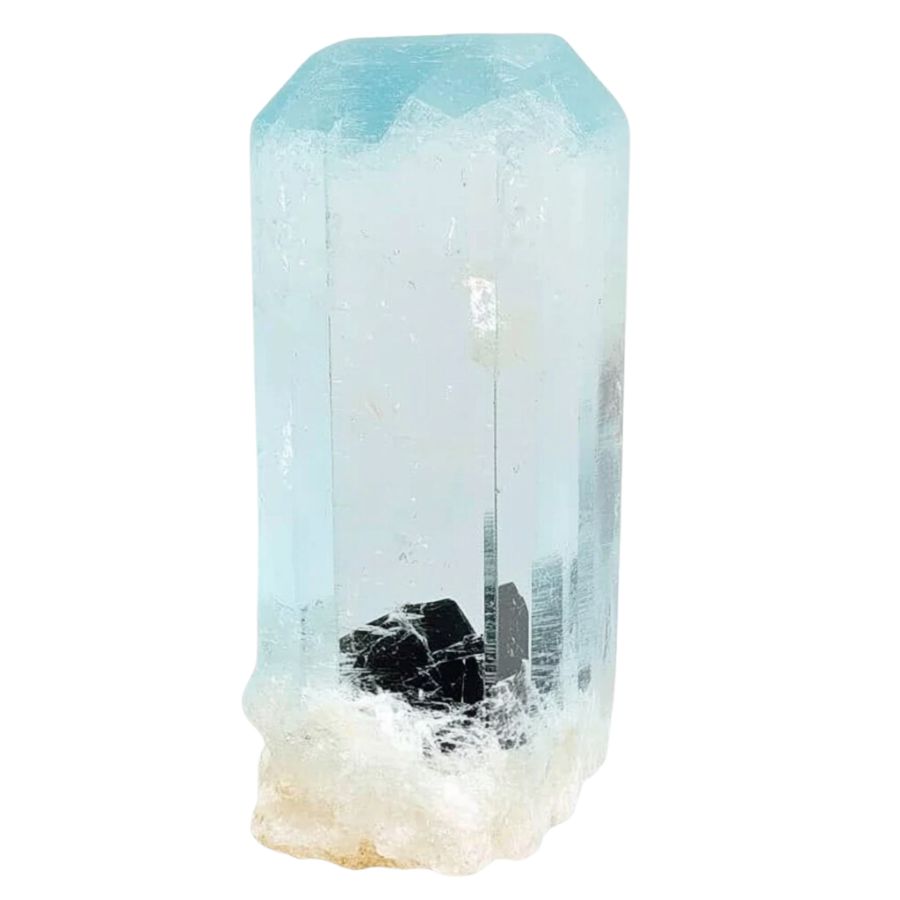
Pay close attention to how much light passes through the crystal. Some crystals are completely clear, allowing light to pass through easily, while others may be opaque and block light entirely.
You might also encounter crystals with translucent edges but opaque centers. These variations in transparency can offer valuable clues about the type of crystal you’ve found, making it easier to identify and appreciate your discovery.
A Quick Request About Collecting
Always Confirm Access and Collection Rules!
Before heading out to any of the locations on our list you need to confirm access requirements and collection rules for both public and private locations directly with the location. We haven’t personally verified every location and the access requirements and collection rules often change without notice.
Many of the locations we mention will not allow collecting but are still great places for those who love to find beautiful rocks and minerals in the wild without keeping them. We also can’t guarantee you will find anything in these locations since they are constantly changing.
Always get updated information directly from the source ahead of time to ensure responsible rockhounding. If you want even more current options it’s always a good idea to contact local rock and mineral clubs and groups
Tips on where to look
Having a better idea of where to look can greatly narrow down your search and increase your chances of finding crystals. By focusing on environments where crystals are likely to be exposed, you can spend less time searching and more time discovering.
Outcrops and Exposed Rock
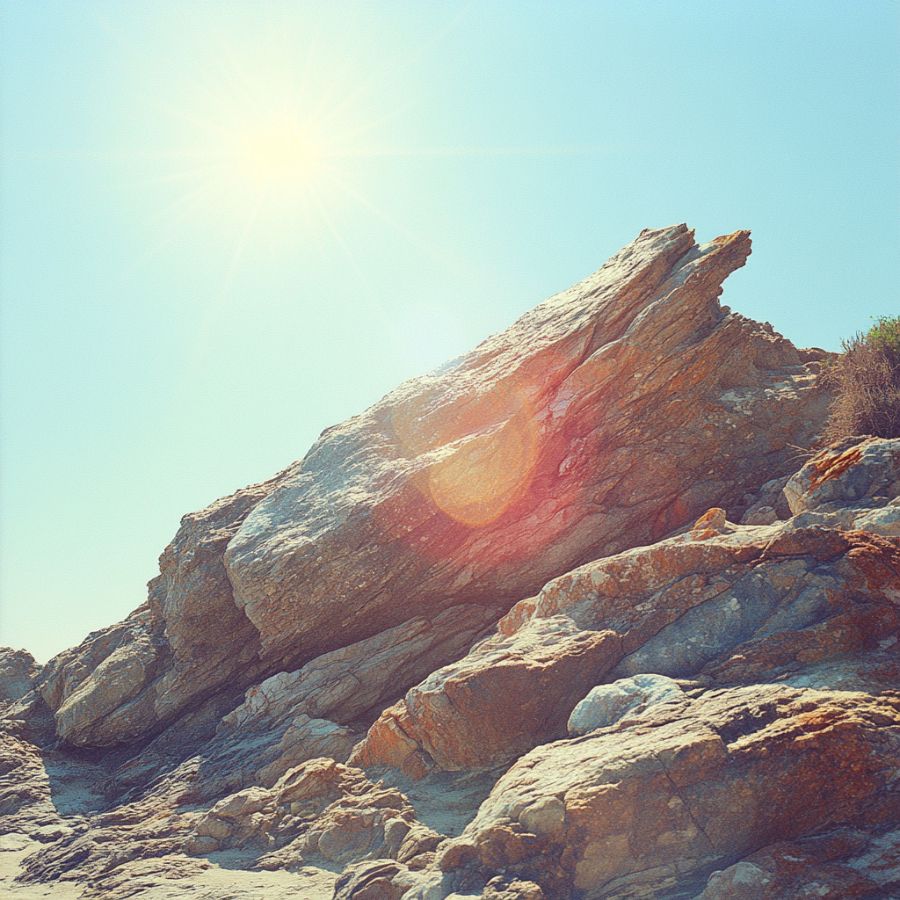
Rocky outcrops are prime locations for finding crystals and minerals. Search along the edges of outcrops, particularly where erosion has worn away the surrounding soil, revealing the rock underneath.
Pay close attention to any visible cracks, crevices, or small cavities within the outcrop, as these are often where crystals develop and can be extracted with minimal effort.
Stream Beds and Gravel Deposits
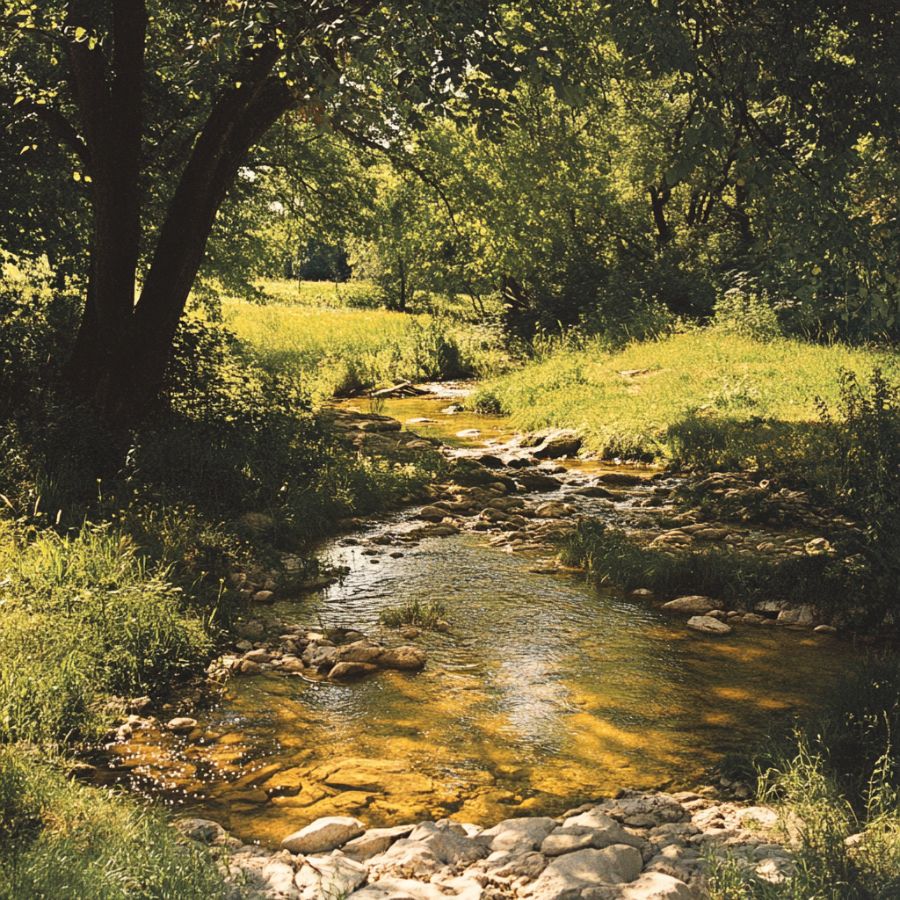
Stream beds are dynamic environments where water flow constantly shapes the landscape. Over time, water can erode rocks upstream, breaking them down and carrying mineral fragments, including crystals, downstream.
When searching in these areas, look for spots where the current has slowed, such as bends in the stream or areas behind large rocks, as these are prime locations for deposits.
Quarries and Mines
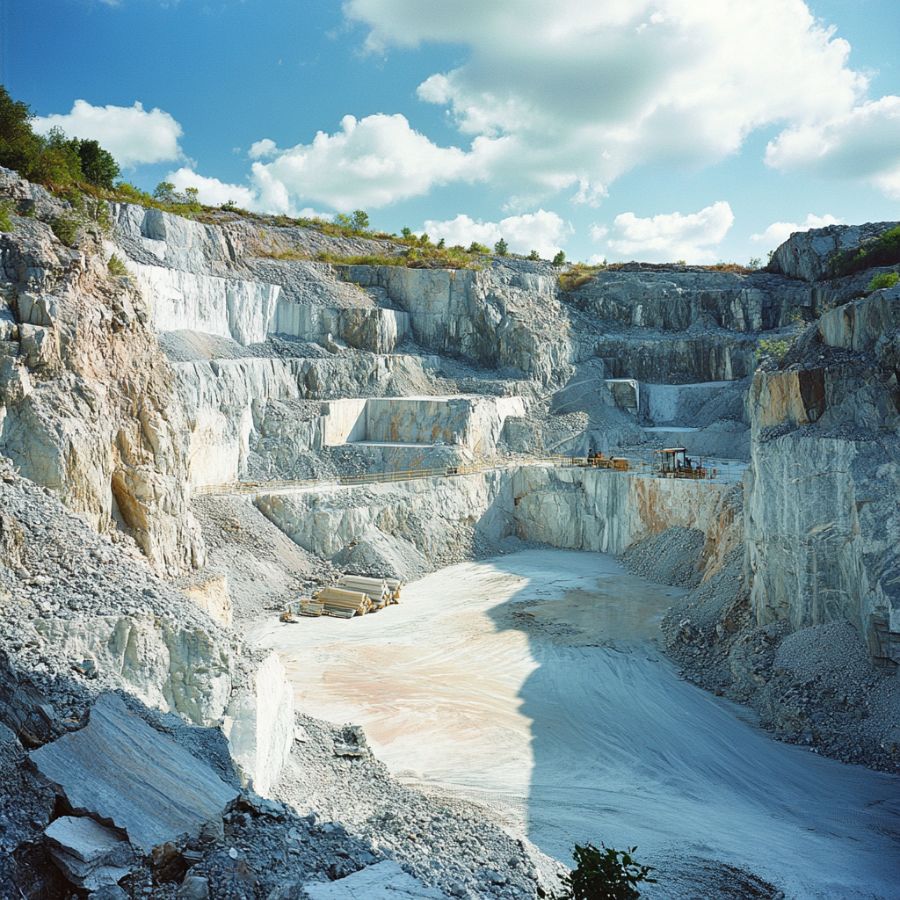
Quarries and mines are excellent places to search for crystals because they expose deep layers of rock that would otherwise be hidden beneath the surface. These sites often contain a variety of minerals and crystals that have been brought to the surface during excavation.
Pay attention to tailings piles, where waste rock is discarded, as they often contain overlooked or broken crystals. Always prioritize safety when exploring these areas and ensure that you have permission to search.
Road Cuts and Construction Sites
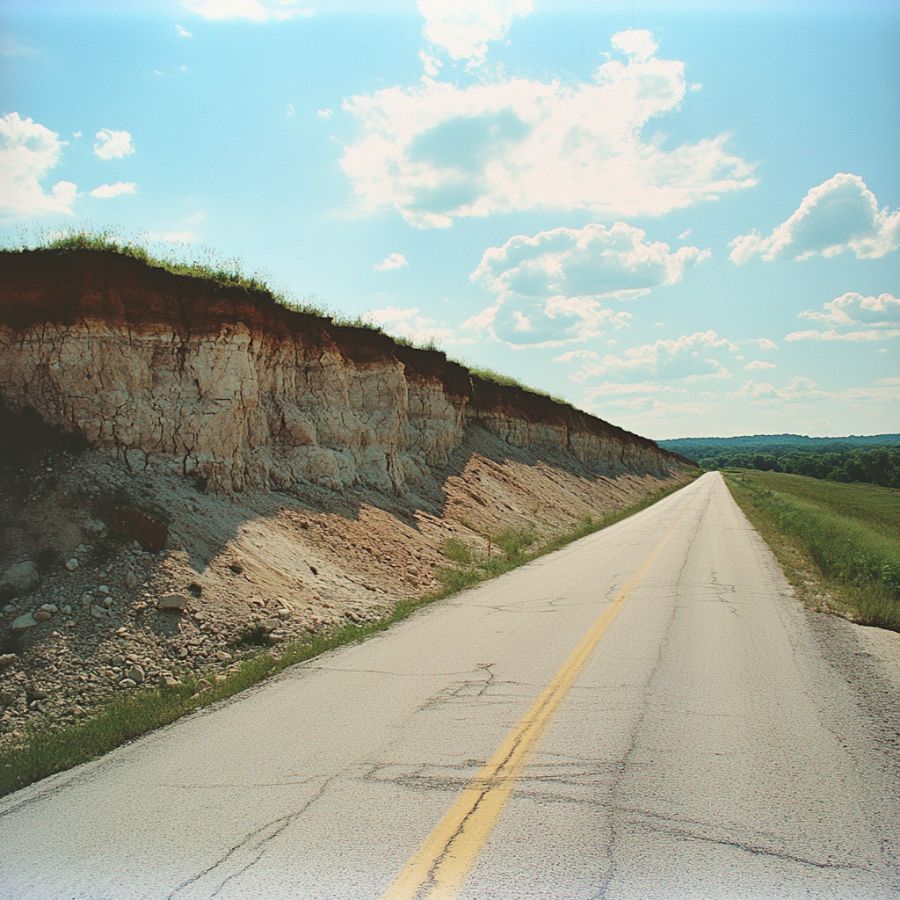
As roads are cut through hillsides or construction projects dig deep foundations, layers of rock and soil that have been undisturbed for millions of years are suddenly exposed.
Look for freshly exposed rock faces, especially where blasting has occurred, as this can create fissures or expose pockets filled with crystals. Be cautious around active construction sites, and always seek permission before exploring.
Mountainous Areas

In mountainous regions, erosion caused by wind, rain, and ice can wear away the softer rock, exposing harder crystals that have formed within. Focus on weathered and broken rock formations.
Look for scree slopes, where loose rock has accumulated at the base of cliffs. Additionally, areas near fault lines or volcanic vents are particularly promising, as they often have a higher concentration of minerals.
DON'T MISS OUT ON ANY GREAT FINDS!
While you're out searching for Crystals you're going to find A LOT of other interesting rocks and minerals along the way. The last thing you want to do is toss out something really interesting or valuable. It can be easy to misidentify things without a little guidance.
We've put together a fantastic field guide that makes identifying 140 of the most interesting and valuable rocks and minerals you will find REALLY EASY. It's simple to use, really durable, and will allow you to identify just about any rock and mineral you come across. Make sure you bring it along on your hunt!
South Dakota Crystal Mining Laws And Regulations
National forests, state parks, and other public lands are often popular locations for crystal hunting.
When exploring these areas, ensure you abide by any rules and regulations in place governed by the South Dakota’s Game, Fish, and Parks Department, including permit requirements, designated collecting areas, and limits on the quantity of specimens that can be collected.
Always seek permission from the landowner before entering private property to search for crystals. Respect the landowner’s wishes and adhere to any guidelines they may provide.
- The extensive local experience and understanding of our team
- Input from multiple local crystal hunters and crystal collecting groups
- The accessibility of the crystal mining locations
- Safety and potential hazards when collecting
- Private and public locations
- A desire to include locations for both experienced crystal hunters and those who are just starting out
Using these weights we think we’ve put together the best list out there for those who love finding new crystals for our collections!
The Best Locations For Crystal Mining in South Dakota
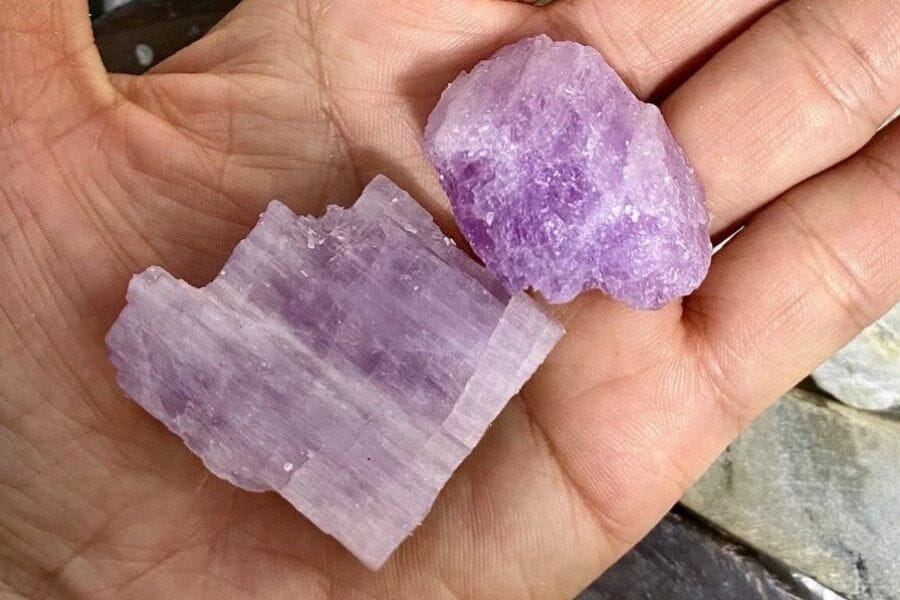
Here are a few of the best crystal-hunting places in South Dakota. We have no doubt that you will have the same success exploring them and discovering unique crystals as we have!
Always Confirm Access and Collection Rules!
Before heading out to any of the locations on our list you need to confirm access requirements and collection rules for both public and private locations directly with the location. We haven’t personally verified every location and the access requirements and collection rules often change without notice.
Many of the locations we mention will not allow collecting but are still great places for those who love to find beautiful rocks and minerals in the wild without keeping them. We also can’t guarantee you will find anything in these locations since they are constantly changing.
Always get updated information directly from the source ahead of time to ensure responsible rockhounding. If you want even more current options it’s always a good idea to contact local rock and mineral clubs and groups
Beecher Lode
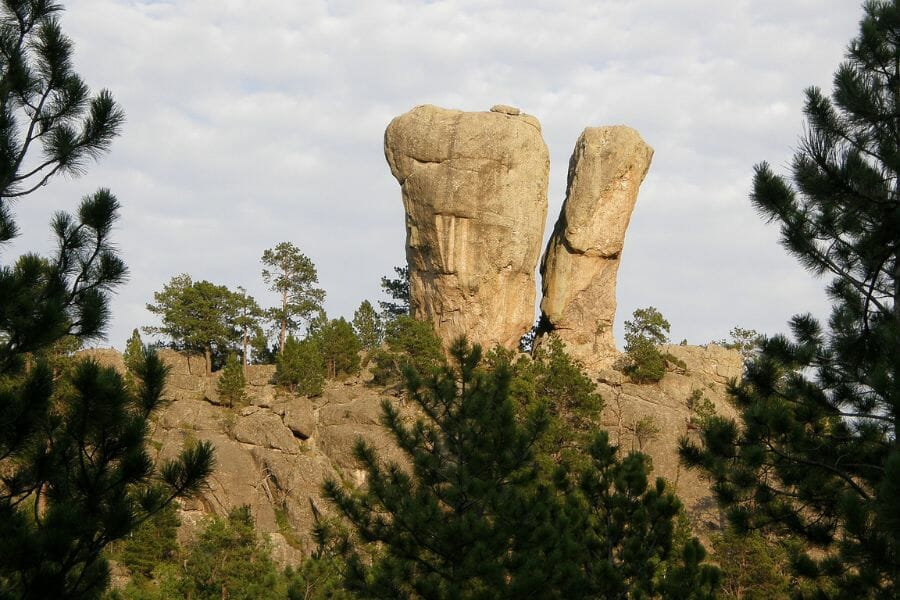
The Beecher Lode area has attracted numerous crystal hunters, enticed by the prospect of uncovering captivating quartz and feldspar specimens. These crystalline treasures embody the earth’s geological wonders with their intricate structures and alluring beauty. As you explore this fascinating site, you’ll follow in the footsteps of those captivated by these natural marvels for generations. This should also be at the top of your list when looking for gems in South Dakota.
The diverse geological makeup of the Beecher Lode provides crystal enthusiasts with a unique opportunity to find a wide range of captivating specimens. If you’re searching for stunning crystals, this historic site should be at the top of your must-visit list. Not only will you be able to unearth these gorgeous treasures, but you’ll also be delving into a rich and storied past.
Where we found crystals at Beecher Lode
At the Beecher Lode, we have gathered various crystals, such as beryl, lepidolite, and tourmaline.
DON'T MISS OUT ON ANY GREAT FINDS!
While you're out searching for Crystals you're going to find A LOT of other interesting rocks and minerals along the way. The last thing you want to do is toss out something really interesting or valuable. It can be easy to misidentify things without a little guidance.
We've put together a fantastic field guide that makes identifying 140 of the most interesting and valuable rocks and minerals you will find REALLY EASY. It's simple to use, really durable, and will allow you to identify just about any rock and mineral you come across. Make sure you bring it along on your hunt!
Bob Ingersoll Mine
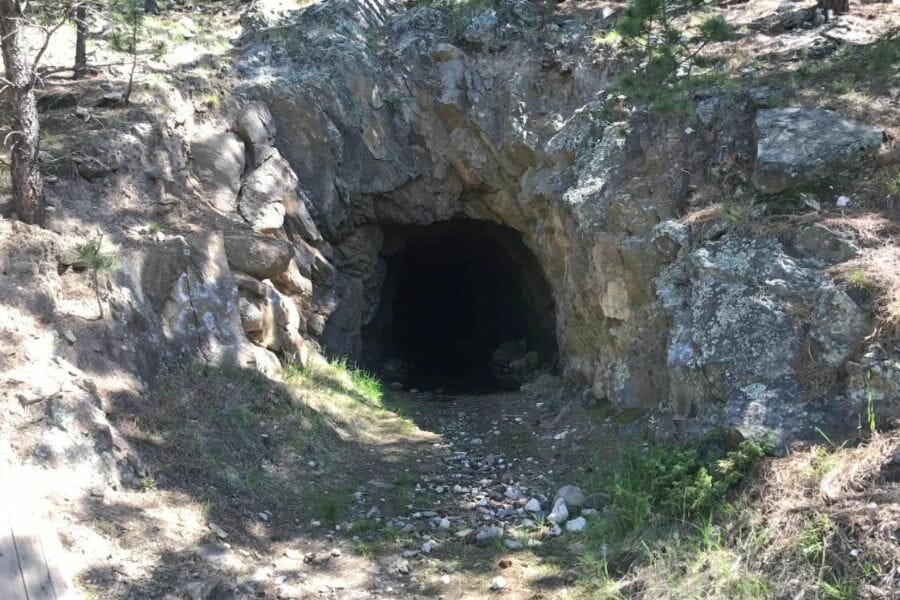
The Bob Ingersoll Mine is renowned for its impressive array of crystals, including quartz, feldspar, and mica. With its geological diversity and historical significance, this intriguing destination will leave a lasting impression on any crystal hunter.
Visiting the Bob Ingersoll Mine is like stepping back in time as you immerse yourself in the rich history of this storied location while simultaneously unearthing some of nature’s most exquisite creations. This fascinating site is an absolute must-see for those seeking a crystal hunting adventure with a historical twist.
Where we found crystals at Bob Ingersoll Mine
At the entire Bob Ingersoll Mine, beryl, garnet, lepidolite, quartz, and tourmaline crystals have been found. Crystal prices can be found in this helpful guide about crystals.
Etta Mine
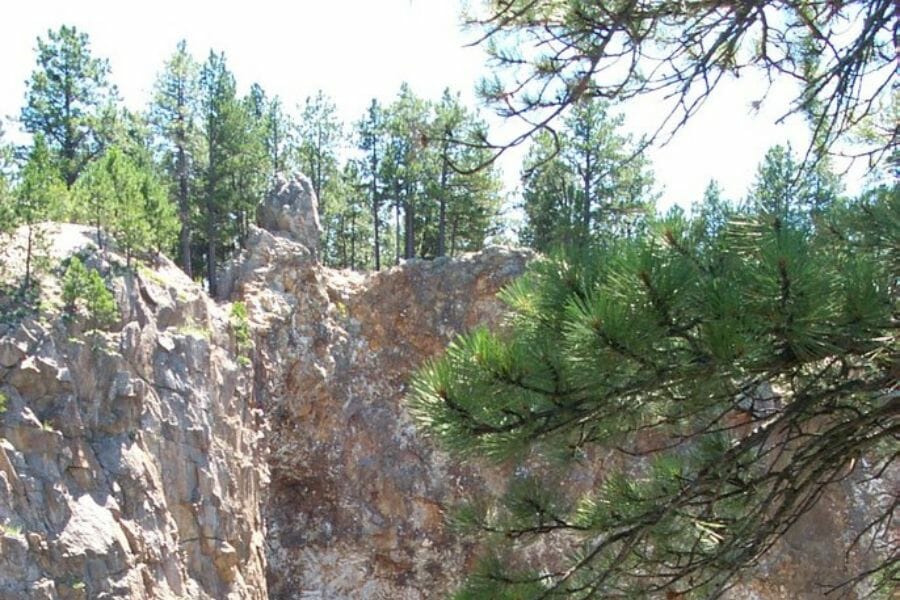
The Etta Mine was originally a source of spodumene, a lithium-bearing mineral once highly valued for use in ceramics, glass, and enamels. As time went on, the mine gained recognition not only for its spodumene deposits but also for its abundant crystal formations.
Visiting the Etta Mine is a delightful journey into a world where history and geology collide in the most captivating way. As you explore this extraordinary site, you’ll have the chance to delve into its storied past while simultaneously unearthing a treasure trove of sparkling gems. With a wealth of crystal formations waiting to be discovered, the Etta Mine is an adventure that’s too good to miss.
Where we found crystals at Etta Mine
Lepidolite and kunzite crystals are primarily found at the dumps of Etta Mine.
Spearfish Canyon
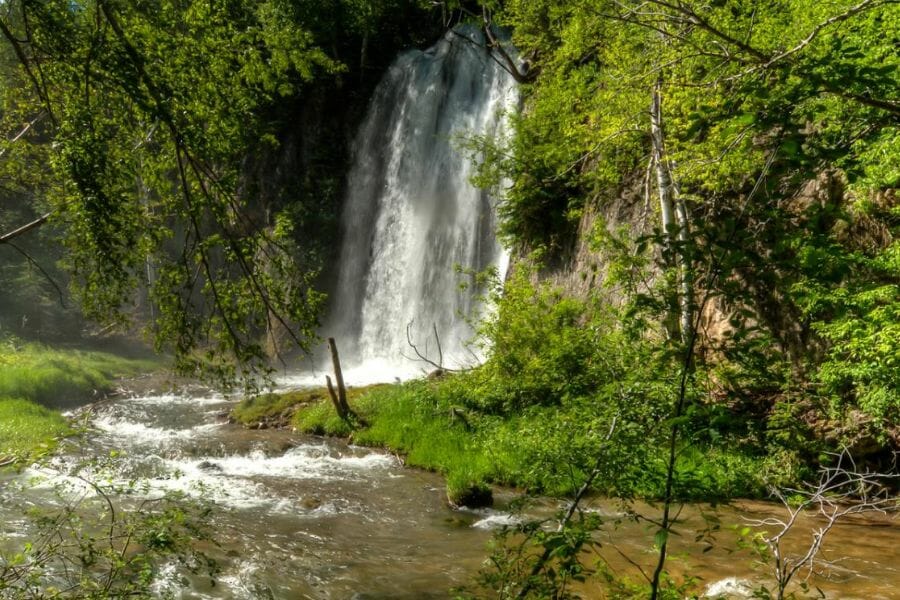
Spearfish Canyon is protected as part of the Black Hills National Forest, ensuring its timeless beauty remains unspoiled for generations. The Canyon’s storied past began with the indigenous peoples who once inhabited the area, followed by gold miners seeking their fortunes during the Black Hills Gold Rush.
For crystal enthusiasts, Spearfish Canyon offers an unrivaled opportunity to explore a wealth of geological treasures. The canyon’s exposed limestone cliffs and creek beds provide a unique hunting ground for these stunning formations, allowing crystal hunters to uncover nature’s glittering gems in a truly remarkable setting.
Where we found crystals at the Spearfish Canyon
The Spearfish Canyon area contains amethyst and chalcedony crystals.
Teepee Canyon
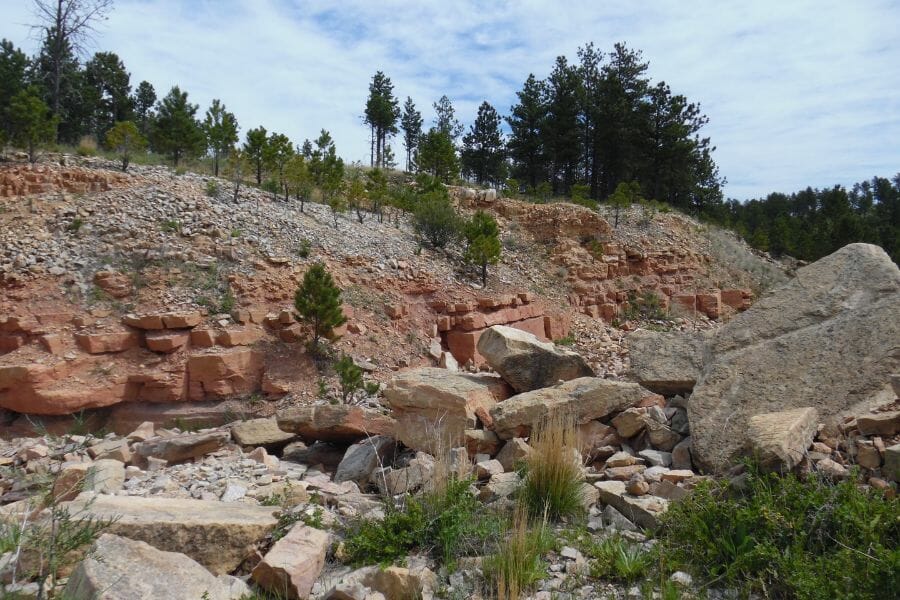
Teepee Canyon is an enchanting geological wonder tucked away in the beautiful Black Hills of South Dakota. This location is a treasure trove for history enthusiasts and crystal hunters alike. It boasts an intriguing past, as it was once home to indigenous peoples who left their mark on the landscape with ancient petroglyphs and cultural artifacts.
For crystal enthusiasts, Teepee Canyon is a veritable playground of glittering geological gems. The area is renowned for its wealth of agate formations, which showcase a kaleidoscope of mesmerizing colors and patterns. These alluring stones are nestled among the canyon’s rugged outcrops and hillsides, enticing crystal hunters to embark on a thrilling quest for nature’s dazzling masterpieces.
Where we found crystals at Teepee Canyon
We had the best luck finding agate, beryl, garnet, lepidolite, and tourmaline crystals at the diggings along the highway leading up to the Teepee Canyon.
Our Other Favorite Places For Crystal Hunting
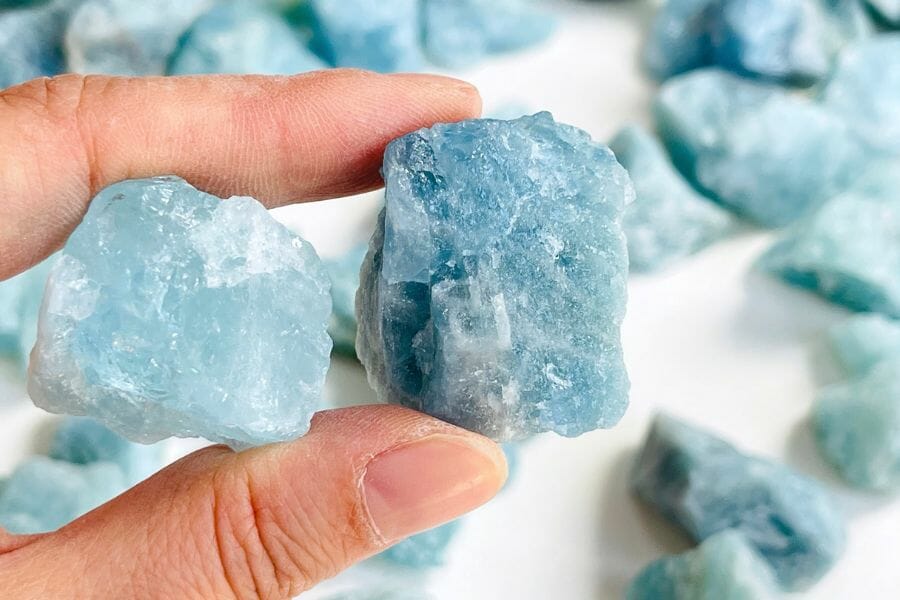
Inherently, the state has many amazing locations where you may search for crystals and dig for geodes in South Dakota. Below is a list of more areas worth considering:
Where you can find crystals for free in South Dakota
Let’s start by discussing a few places you can look without paying. Some places are free to visit, even if many attractive places require an entrance fee.
| County | Location |
| Bon Homme | River banks, stream beds, breaks, excavations, and regional road cuts in Scotland to Wagner for Selenite |
| Campbell | Regional hillsides, ridges, cut banks, and tributary gravels west to Missouri River for opal |
| Corson | Area ridges, slopes, and stream beds for opal |
| Custer | Stream gravels, cut banks, breaks, hillsides at Buffalo Gap for agate |
| Custer | Deer Camp road to Tin Mountain area for garnet, quartz, and tourmaline |
| Custer | Jewel Cave National Monument and up north to Hell Canyon for agate, jade, and jasper |
| Custer | Pleasant Valley Creek in Red Canyon for agate, jade, jasper, and rose quartz |
| Douglas | Stream banks, road cuts, and gravel beds at Corsica for selenite |
| Fall River | Badland breaks for agate, jasper, and chalcedony |
| Fall River | Area quarries at Hot Springs for calcite and chalcedony |
| Harding | Regional gravel bars of the Little Missouri River and all tributary creeks for agate |
| Lawrence | Ragged Top Mountain District for fluorite |
| Lawrence | In gravel bars and banks of Whitewood Creek for amethyst and chalcedony |
| Meade | At the badlands region for chalcedony |
| Minnehaha | All regional stream gravels, cut banks, gravel pits, and excavations for agate and jasper |
| Pennington | Bear Butte Creek, Box Elder Creek, and Warrens Gulch for amethyst |
| Shannon | Fall River Creek for agate, chalcedony, and jasper |
| Shannon | Cheyenne River for agate, chalcedony, jasper |
| Ziebach | Rattlesnake Butte for calcite |
Other great places to dig for crystals
These other fantastic locations are terrific places to look for crystals if you don’t mind spending money on them. Seasonal variations in the cost and potential free periods are both possible. Before going to these places, get in touch with them.
| County | Location |
| Lawrence | Broken Butte Gold Mine for galena and pyrite |
| Lawrence | Homestake Gold Mine for galena and pyrite |
| Lawrence | Iron Hill and area mines for fluorite, galena, and wulfenite |
| Lawrence | Ulster Mine for fluorite |
| Pennington | Peerless Mine and regional pegmatite outcrops for apatite, aquamarine, and beryl |
The Best Crystal Shops In South Dakota
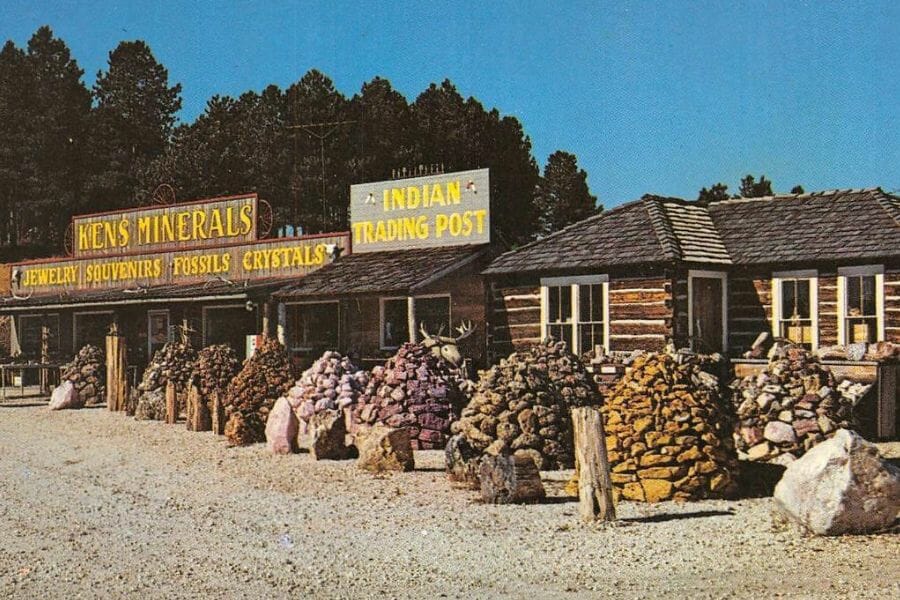
Many of us enjoy to make little purchases to complete our collections because the state offers such a vast array of crystals. If you’re searching for rare and beautiful specimens, these crystal shops are the best we could discover.
- Dakota Stone Rock Shop – US-385, Hill City, SD 57745
- Dave’s Rock Shop – 1020 Mt Rushmore Rd, Custer, SD 57730
- Foxxie Crystals – 1239 Church St, Leola, SD 57456
- Indigo Iris Rocks and Stones – 7275 Mt Rushmore Rd, Rapid City, SD 57702
- The Giving Goat Crystal Shop – 1420 North Ave #5, Spearfish, SD 57783
- Ken’s Minerals and Trading Post – 12372 US-16, Custer, SD 57730
- Mystic Market – 614 St Joseph St, Rapid City, SD 57701
- Rock Shed – 515 1st St, Keystone, SD 57751
- The Everything Zen – 121 E Kemp Ave, Watertown, SD 57201
- Things That Rock – 257 Main St, Hill City, SD 57745
Additional places to find crystals in nearby states
If you’ve already tried all of our recommendations above or are planning a trip out of the state, you should check out our guides for neighboring states:
- Crystals in Iowa
- Crystals in Minnesota
- Crystals in Montana
- Crystals in Nebraska
- Crystals in North Dakota
- Crystals in Wyoming
If you have any recommendations we haven’t covered please leave them in the comments below!

